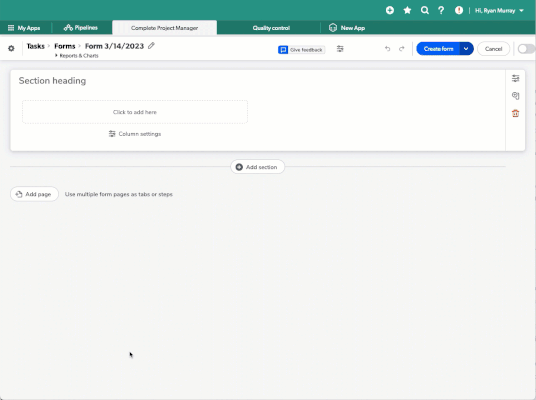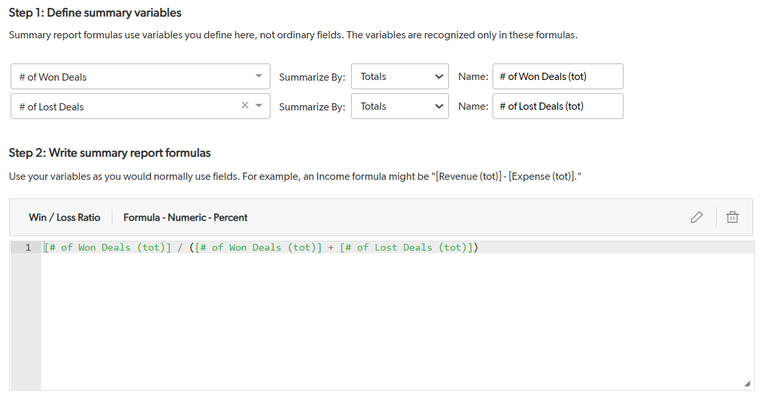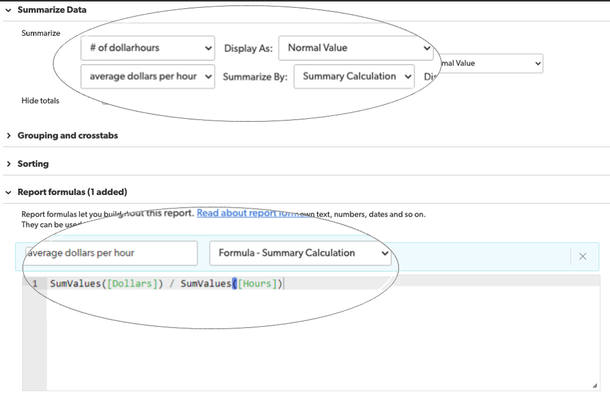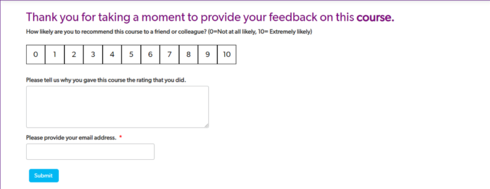Announcing new forms beta
New form experience beta All customers will soon benefit from a more intuitive, modern form experience. We’ve started enabling our new form designer for select customers. Read more about the feature and how to get involved below. Over the last few years, we’ve released updated dashboards, table reports, charts, and new ways to build reports. Our journey to improve the Quickbase user interface continues with a reimagined form experience aimed to increase productivity for both app builders and their users. With the new version of forms, you can accelerate the app development process with a drag and drop, WYSIWYG form builder to help your team, see, connect, and control their most complex work. We’ll be enabling this feature in waves as we learn about your experience and gather feedback that will inform our roadmap on the way to General Availability later this year. Customers can join the wait-list by registering in this app. What’s new We want to empower you with the tools you need to make your apps and businesses successful. Though we've retained many of the features that Quickbase users love, our primary focus was on innovating for the future. You'll notice familiar and new patterns in our form designer. While you may not see every setting, toggle, or switch that you've grown accustomed to over the past two decades, we believe that we've incorporated the best of them into this new world. We’re excited to see what you create! Drag-and-drop building We believe that it’s important for you to view your forms from an end-user perspective during the building process. So, we created the drag and drop interface and quick add menu to allow you to see what your form will look like for your end users in real time. You can add elements and rearrange them with immediate results for quicker, more confident form building. Based on customer feedback, we’ve learned that builders want granular control over form layout and element positioning, so we’re introducing more ways to organize elements on the form builder canvas. In addition to pages and sections, builders can now use new columns and groups to separate and structure elements on their forms. Adding columns Use columns to group and arrange similar fields in a visually distinct and easily accessible way to enhance the end-user experience. Column widths are customizable. To shrink or expand a column, hover over the column, click, and drag to your desired width. Add headings and custom color styling to each column, and create form rules to apply specific actions like show, hide, or require all the fields within a column. Grouping elements You can group elements together to display them on the same row within a column for improved data entry and visualization experiences. To group elements, drag-and-drop them on top of one another. Once grouped, the fields can be moved as one object on the canvas. More intuitive ways to add elements to your form We’ll be improving upon many existing patterns to help builders of all experience levels get the most out of Quickbase. One of the first improvements in this area is adding embedded reports to your form. In addition to adding a report link directly to the form, you can choose to add a Report component and build the matching criteria on the fly. Better ways to enter data Displaying pages as steps We’re giving you new tools to simplify workflows that include complex data entry. When a form has multiple pages, you can customize the navigation experience for your users. Choose Steps from the navigation settings to turn your form into a series of steps that users proceed through as they enter data. Steps can be conditionally shown or hidden using form rules for more control over the end user experience. Note: while in beta, forms are limited to 10 pages/steps New pop-up form experience We want to make entering data into related tables as seamless as possible. To begin, we’ll start with a new in-window option for adding parent records directly from a child. When you click the (+)Create a new record button inside of the record picker, and the two tables both use a new form, a pop-up form will appear over the current record allowing you to create a record in context. This is a pattern we look forward to implementing in other areas of the product in the future. Improvements to form rules We’re excited to give our builders an entirely new form rule engine that will help them create sophisticated forms that dynamically change based on their business processes. New ways to build conditions In beta, you can write a boolean formula expression to define a rule’s condition. As we get closer to GA, we’ll release a more intuitive condition builder. In both cases, you’ll benefit from the ability to create complex expressions using nested conditions, and - when using a formula - create conditions that previously required building a separate field in the table to leverage. In this example, the builder is showing a set of fields when expense amount plus the current project costs would push the project over budget. New action types Now, you have more options to dynamically change the display of your form. To start, you can update the color of a column to draw a users attention to important fields. Later on, we’ll release new ways to display messages on a form and change the label displayed on a field, column, section, or page. Simpler, modern UI To help you create apps your end users love, we’re releasing improvements to our fields to make entering data easier than ever before. Date picker Use intuitive controls to find a specific date. Jump between months, years, and decades. Timezone helper Working across time zones can be a challenge, but we’ve made it simpler to reconcile app time, your local time, and your team's time. Now users can search for a timezone in our timezone helper to automatically fill the correct time. File attachment Take advantage of a large drop area to drag files directly into Quickbase and upload them to a record. A note on accessibility Ensuring that all users are able to get their jobs done in Quickbase is an important aspect of the work we do on the product team. We strive to meet WCAG 2.1 AA accessibility standards for end users. You can read more about our approach to accessibility on Quickbase Community. About Beta In beta, we’ll be looking for customers willing to partner with us to uncover issues and provide feedback on the overall experience. While in beta, expect to uncover bugs and gaps in functionality. We’ll use this opportunity to learn from our customers what works well and what needs improvement. Joining the beta We’ll be activating the feature for customers in waves over the next several months on our way to General Availability. Interested customers can join the wait-list in our beta registration app. Giving feedback We’ll be looking for your feedback to help provide direction on where you feel we can improve the new experience. You can log this feedback directly in the form designer by clicking the Give Feedback button in the page bar. Here you can give general feedback, report issues, and submit feature requests. We can’t wait to see what you build! What’s next We’re focused on delivering more features over the next few months, and beyond! Our goal is to create a foundation for customer innovation that will last for the next twenty years. We’ll be using your feedback to help inform us on our way to General Availability. Be on the lookout for news regarding: Additional capabilities in our form rules engine, like data changes and the ability to create conditions using a WYSIWYG expression builder. Backup and restore of forms Copying forms when apps and tables are copied, and allowing users to copy individual forms Making changes to new forms in a sandbox Adding more step customization options Adding multiple embedded reports of any type Supporting a table’s auto-save setting Showing new form activity in the Field Usage page10Views0likes0Comments- 1View0likes0Comments
Journey to Pipelines Certification Part I: The Why and The How
If you’ve been enjoying Kiko’s series on “Journey of a new builder” blog series, I want to invite you to follow me, Esther, as I embark on a path towards Pipelines Certification. Why follow me? Prior to joining as an employee in January 2022, I knew nothing about Quickbase. I had very little coding experience - unless you want to count CSS and HTML on Myspace and a few rich-text boxes. That’s right, you read that correctly, “Myspace”. Six weeks after going through the University courses and plenty of hands-on practice, I was able to pass the builder certification and build my own custom application with multiple many-to-many relationships. Now I’m ready for the next challenge! Get me automated with Pipelines Gartner’s 2022 top four predictions for digital infrastructure boils down to this equation: Automation = Cost optimization + Increased Flexibility and Efficiency Organizations who are actively investing in workflow transformation understand they’re playing the long game and investing in their future. To automate workflows among Quickbase apps or outside third-party tools, we use a tool called Pipelines which lets you fully integrate data across all existing cloud-based software tools and automate workflows between various SaaS tools. Let’s not sugarcoat it – going automated is hard work. Doing actual data integration on my own feels super intimidating. How am I, someone who nearly passes out when looking at pages of code, supposed to get Pipelines certified? How I’m going to get certified For me to go from novice to certification, my plan is to simplify learning Pipelines into something I could relate to, take all the Quickbase Pipelines Certification courses, attend live training, lean on my colleagues who can offer tips and tricks, and practice building Pipelines as much as I can. I will be documenting my learning experience along the way in hopes that it will help readers see the value in getting Pipelines certified while offering guidance on your path towards certification. At the heart of it, getting Pipelines Certified is personal. I want to prove to myself that I can go from being a no-code-non-techy-stay-at-home-mom to being both Quickbase Builder and Pipelines certified within a year. It’s ambitious, but possible. Here's what I’ve done so far to get me ready for the Pipelines Certification exam: Signed up for the Path to Pipelines Certification in Quickbase University and started watching the videos. All Pipelines require a user token to work. Therefore, I created a user token for the exercises in the course. Next, I scanned Quickbase’s Community blog and found an awesome reference article called, “So You Want To Learn Pipelines!” which includes additional articles and videos to supplement the online learning courses. If there’s something in the online course or help files that don’t make sense, my next stop is the Quickbase community to see if anyone broke it down into laymen terms. Test anxiety is something I’ve suffered with for most of my life. To help manage it, I put together a list of questions to interview colleagues who have recently passed the Pipelines Certification exam. I’ll be gathering tips and tricks that will set me up for a successful exam experience and will share it with all of you in an upcoming blog post. Blocked time in my schedule for focused learning and breaks. I’ve scheduled 30 minutes to an hour a day during the work week on my calendar. Signed up for Virtual Empower 2022. Each year, Quickbase hosts a certification study session and I don’t want to miss that. If you sign up and attend, then you’ll receive a discount code to apply to the cost of taking the certification exam. As they say, “Luck favors the prepared” and I’m not ashamed to stack the deck with a game plan that works best for my learning style. Click on the links above to get started on your journey towards Pipelines certification.3Views0likes0Comments- 2Views0likes0Comments
summary report formulas
AsaData Analyst atQuickbase, I'm often asked to create reports and scorecards to track our performance over time. In most cases, it's easy to providethisdata with thesummary reportfeature – it can be done simply by adding the numeric fields to the report, choosing how to aggregate them (sum, average,etc.) and grouping by the appropriate date fields. But what can you do when you're asked to perform additional calculations on those aggregated metrics? Some people refer to this as theaverages of averagesproblem, even though it is much more! There are plenty of thesescenarios in every department:lead conversion in marketing, quota attainment in sales, net retention in finance, just to name a few…Also, different business units often have their own targets, and they need reports to inform how theyareexecuting against them on a monthly, quarterly and annualbasis. Since this was not possible on summary reports, my usual workaround was creating new tables, adding summary fields and doing the final calculations there. I'm very excited that now our product has a new feature calledsummary report formulas, which makes those calculations much easier than before, and will save me a lot of time and effort! Now, all I need to do is create a summary report on my source table,choose how to group my dataandfollow 3 simple steps: 1. Define summary variables– Simple example–Calculatingwin / loss ratioinSales.Values todefine: Total # ofwon deals Total # oflost deals. Complex example: Calculatingutilization ratio against target for a customer support center.Values to define: Durationofdirectcustomer support(hours) Durationofadditional customer support tasks(hours) # of vacation hours # of sick leave hours 2. Write summary report formula– Formulato calculatewin / loss ratio: Total# ofwon deals/(Total# ofwon deals + Total # of lost deals) Formula to calculate utilization ratio against target (assuming that the report is grouped by weekand byrep, each support rep works 40h a week and is expected to haveautilizationof 60%): (Duration of direct customer support (hours) + Duration of additional customer support tasks (hours))/ (40 - # of vacation hours - # of sick leave hours)/0.6 3. Add my new field(s)to the report. This way, instead of creating separate tables with calculations for each time period, I can buildallofmy reports with percentage calculations on the same table.Stakeholderswon't have to wait for me to create a few tables, join them, add summary fields, and then write the formulas to get theresults.Thanks to summary report formulas, I will be able todeliver data to the business in minutes, rather than days and hours! This feature is currently in beta. You can express interestinourbeta registration application. We are inviting people into the program in waves but if you believe you have a use case that may enable you to provide valuable feedback on this feature, please reach out to your account team. ------------------------------ Aleksandra Cybulska ------------------------------8Views0likes0Commentsdo service workers work in the QB mobile app?
I've searched this forum but cannot find any mention on whether service worker work in the QB app. Does anyone know? If they do not I won't invest time with them. thanks J ------------------------------ John Niumata ------------------------------6Views0likes10CommentsBad things
This thread discusses inserting custom code in a part of Quickbase where it was never intended to be used. Inserting custom code in this manner, in any software system, is considered a security vulnerability, and such code can break at any time without warning. Extending your Quickbase apps with custom code is a vital part of our platform, but all such custom code must be used in a code page. In 2021, we will begin to block any further additions of JavaScript code outside of code pages. This also means that any modifications of fields which include JavaScipt will be blocked, unless the JavaScript is removed. Places in your Quickbase apps where you have already inserted JavaScript will continue to function. However, as has always been the case, these fields can break without warning. [future link to Graham’s community post] This is a test. I'm doing bad things with Quick Base. ------------------------------ Harrison Hersch ------------------------------4Views0likes0CommentsImprovements to the QB Formula Engine: Kicking it into High Gear
As we embark on another 20 years of Quick Base magic, we plan on taking the best of what has made Quick Base special and investing to make it even better. I've made no secret of how cool I think Quick Base is. Our proprietary engine combines the traditional layers of database, application, security and interface all into one – leading to an exceptional time to value. In seconds, we often perform millions of calculations to deliver rich insights to our users. These calculations help them make operational decisions for their business in record time. We're hard at work on some major improvements to our formula engine, allowing you to perform computation on summarized data inside of a report formula, as well as enabling formulas which can access any field in an application without needing a relationship. Read on to learn more about how this can help accelerate your business in the new year. Formulas Thinking about how we prioritize our roadmap for a platform like ours is not easy. We often have competing personas using Quick Base which loosely can be categorized as: Business: Commonly referred to as Citizen Developers, these builders typically don't have a software development or database background. They likely have experience in Excel, but usually not writing code. Their closest comparison is a spreadsheet, not C# and SQL. Developers: Builders who have a functioning software engineering background, who usually expect Quick Base to work like a traditional software stack. One area that continues to shine through, reaching a common ground with all of these builders, is our formula language. This is an area we constantly invest research in whether it is via analyzing support cases, usage, or user studies with our awesome XD team. We try to understand the balance between offering more power and making things simpler. Our formulas can be used to drive custom data rules for validation, and color coding on a report. Formulas can be hundreds, or even thousands of lines long, referencing a virtually unlimited number of fields. They can also be immensely powerful with just one line. And, of course, these fields can reference summaries, lookups or even other formulas. They can be effectively be the heart of an application's logic and workflow. And unlike traditional technologies, these formulas operate as discrete fields. That means users can report on them, they can drive permissions, and be used in API calls. In the past year, we have added some minor enhancements to the formula engine to streamline things for builders. For example, we added SearchAndReplace() which drastically reduces complexity for managing text strings. WeekOfYear() simplifies date calculations, one of the most common things done in apps. Up Next We know that enhancing our formula language will unlock capabilities for our builders to solve even more complex problems. We will also drastically simplify existing patterns – taking our record time-to-value further. You may have seen me preview some of this in our Empower 2020 keynote. And now, with hands on keyboard, it's time to really start the planning process. So, as a builder what can you expect? First, we are going to offer more advanced analytical capabilities by allowing you to perform mathematical operations on summarized data inside of a report formula. The focus for this feature will be summary reports. You may be solving these problems today by use of a statistics table in Quick Base, sometimes referred to as fact tables in relational databases. In our initial prototypes and user studies, we were able to re. We want builders to use tables to organize data, not be needed just for calculations. So, get ready to calculate timecards, budgeting, forecasts, inventory and more to your heart's content! Next, get ready to access any field in an application without a relationship. Yes, you read that correctly... You will be able to access any field in an application without a relationship. Now, we aren't planning to replace relationships. They will continue to serve as the primary way to reference data between tables. And the power that people have achieved leveraging those relationships is amazing. You are all solving problems in Quick Base using these features that arguably couldn't be achieved in any other platform, without investing exponentially more time and resources. We know though that there are plenty of times where creating extra relationships is overkill. The most simple of which is the classic "reverse parent child". This is one of many creative patterns (like lookups of summaries, 1-to-1 relationships, and more) that we can simplify. Maybe you need to gain visibility to a "sibling" record – such as viewing the primary contact name from a customer on an opportunity. The ability to query any table inside of , or reference multiple field values as variables inside of a formula without discretely defining lookup fields is going to simplify app structures even further. Formulas will allow you to gather one, or many records. Subsequently, that formula will be able to aggregate values it finds – effectively allowing for a summary-field without a relationship. For the first time, you will be able to aggregate values across records and tables in a single calculation. We have some work ahead of us to finish these features and get them in your hands - between testing, validation and performance optimizations. Finally, there are a collection of things in formulas we have on the list that are small, but valuable, nonetheless. Things like allowing for regex inside of a formula to detect and act on text patterns for our most savvy builders. Tying it all together While they are only one piece of the puzzle, formulas drive real-time insights into operational data. Those insights may come by way of a single record form and a status field, a table report, an API call from another system or rich charts and dashboards. One of the most exciting things here is how improvements to our underlying engine ties to the initiative to modernize our interface. Our updated charts, reports and dashboards will come together visualizing data powered by the most sophisticated underlying capabilities in a no-code platform. Creating a beautiful KPI widget on a modern dashboard from complex calculations will be easier than ever – providing rich insights to users at a glance. While builders will be using some new formulas in the first half of 2021 (and they will be great), I'm personally excited by how all the output of our different teams will blend in the next 18-24 months. Delightful dashboards, modernized reports, a new interactive form builder and updates to the special sauce – our unique in-memory database – will further cement Quick Base as the leading no-code platform. ------------------------------ Harrison Hersch ------------------------------3Views0likes0CommentsCreating a Survey to Collect Data from Non-users
At the end of each coursein Quick Base University, ourtrainingteam uses a Quick Base app that I created to collect feedback from our learners. Some of our leaners are users in our app and some are not.We want to collect feedback from everyonewhether they are users in our realm, our app, or non-users(people who do not have permission on our realm or in our app). To do this,I created a formand a role for the group ÒEveryone on the InternetÓ (EOTI). The team then createsa customURL and embeds it on the web page in the last lesson of each course. 1. Create a survey form with a submit button You need a table to house survey questions.I create different tables for each type of survey because it makes reporting easier.I suggest using short field names. For example, if thequestion is,ÒHowwould you rate your overall experience on Quick Base University?Ó, agood field name might be ÒOverall ExperienceÓ. Then whenyoucreate theform,youcan add the full text as analternate label. Be sure to add a Submitbutton.Create itusing a Formula-Rich Text field type. The formula for thebutton is: "<a class='Vibrant Success' onclick='DoSaveAdd()'href='#'>Submit</a>" You can edit the default form orcreate a second form. Iuse 2 separate forms,a formfor myteamÕsrole anda formfor my EOTI view,because I have fields thatour teamusesto add comments and assign feedbackforteam membersto address. 2. CreatearedirectHTML page I created a simple thank you page.You can usecode pages to create an html page. You will need this page to load after a user submits feedback. You may want toincludesome text or images on this pageto notifythe user that the survey has beensubmitted. 3. Createarole with permissions to see only the necessary fields I create an EOTI role.I do this so that whenever I see the role I know that it is open to everyone and I need to be cautious about the permissions that I set.I usually set the role permissions on a survey table to only be able to add a record. I add custom rules for fields, so users assigned this role can see and modify only the fields on the form.You can createanEOTI roleand assign itto the ÒEveryone on the InternetÓ group. This will allow non-users to respond to your survey. 4.InvitetheÒEveryone on the InternetÓgroupto yourapp To allow non-users to access the survey,Isharedthe app with theÒEveryone on the InternetÓ group.When you aresharing with a new user,if you typeEveryone,the group will populate for you. Set the role for this group to the EOTI role that you just created. 5. CreatetheURL The team createsa uniqueURL for each course that they develop.Youcanedit the URL and theneither add it as a link or use an iframe to embed it on another page. Copy the form URL from your browser.It will look something like this: https://team.quickbase.com/db/bneukue8v?a=nwr You can hidethe Quick Base interface by adding&ifv=1to the end of yourURL. It will look something like: https://team.quickbase.com/db/bneukue8v?a=nwr&ifv=1 Our teamwantsto know which coursethefeedback came from,so we create a slightly different link for each course. We set the Course Number field in the URL.Youcan use&_fid=to set the text in the field. The Course Number field is field number22inourapp.We add the course number after the=. In this example the course number is ZZZZ. https://team.quickbase.com/db/bneukue8v?a=nwr&ifv=1&_fid_22=ZZZZ Our team wantsour end users to know that their feedback has been received,so we usearedirect pagewhich loads after the survey has been submitted. You can use&nextURL=toredirectthe iframeor page.You can find the URL for the page by going to the Pages page in your app, previewingthe page, and copyingthe URL from your browser. The URL will look something like this: https://team.quickbase.com/db/bneuj8f7m?a=dbpage&pageID=2 Youneed to encode anythingin the URLthat is not a number or letter.HereÕstheencoding you will need: Your finalURLwill look something like this: 6. Link or embed the URL On our team, we embed the survey using an iframe. You canembed the link with an iframeoruse the URL to create a link on a webpage or in an email.If you are embedding theform into another web page,wrap theURLin an iframe tag, like this: <iframe src="https://team.quickbase.com/db/bneukue8v?a=nwr&ifv=1&_fid_22=ZZZZ&nextURL=https%3A%2F%2Fteam.quickbase.com%2Fdb%2Fbneuj8f7m%3Fa%3Ddbpage%26pageID%3D2"></iframe> You are now on your way to gathering feedback using a Quick Base app. What do you want to learn next?Go toQuickBase Universityor leave a comment below.14Views0likes3Comments- 62Views7likes28Comments





